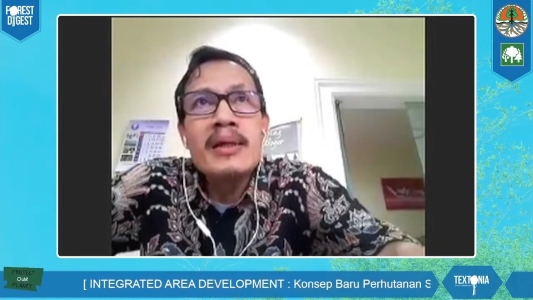Prof Didik Suharjito: IAD Social Forestry Should Be Participatory, Inclusive and Cross-Sectoral

According to Prof Didik Suharjito, Professor of IPB University from the Faculty of Forestry and Environment (Fahutan), along with its development, social forestry currently has a new concept, namely Integrated Area Development (IAD) based on upstream and downstream.
“The important thing in all IAD designs in other countries should also be encouraged in the development of IAD. The planning must be participatory and inclusive. Community involvement is also very important,” he said in a Forest Digest Webinar titled ‘Integrated Area Development: The New Concept of Social Forestry’, recently.
He said that the implementation of this new concept must be based on cross-aspects and sectors, especially when it comes to sustainable development. Environmental aspects are also included, not only based on economic growth and the achievement of justice.
“The development must be cross-sectoral, meaning it involves penta helix collaboration. The point is that the implementation of social forestry needs to be cross-aspect and cross-sector, especially in sustainable development and cross-generation in its development plan,” he said.
In developing IAD, Prof Didik said, it must involve geographical areas and inter-regional relations. There is devolution of responsibility, authority and finance from national to regional.
“IAD is a rural development strategy. IAD as a vehicle to integrate the regionalization process where resource allocation patterns at the subregional level are carried out,” he explained.
Prof Didik explained that rural areas are not only placed as primary agricultural producers, but also connected to the market. Industrialization is developed in rural areas so that employment opportunities increase and have an impact on employment and economic growth. Young people will also be attracted back to the village so that the rural economic turnover increases.
“Planning is built in real terms with its problems and it is worked on by several sectors. If there is production, the results will be rushed to the market and connected to social forestry, which has recently emphasized off farm,” he added.
However, he emphasized that the IAD planning process cannot be impromptu, but through a bottom-up process. In addition, institutions are also strengthened so that rural areas can move on their own. (MW/Rz) (IAAS/RUM)



